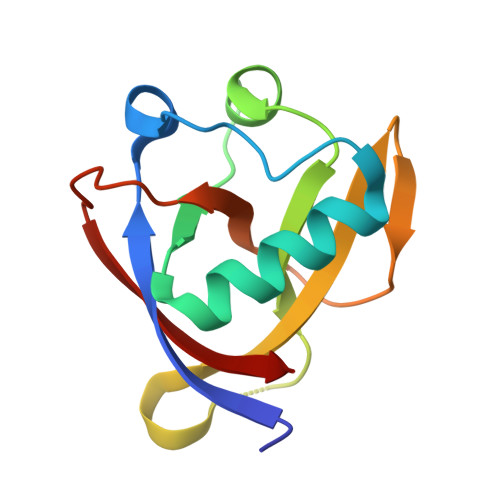Crystallographic fragment screening against SARS-CoV-2 nonstructural protein 1 using the F2X-Entry Screen and a newly developed fragment library.
Lennartz, F., Wollenhaupt, J., Oelker, M., Froling, P., Mueller, U., Deckers, A., Grathwol, C., Brase, S., Jung, N., Weiss, M.S.(2025) Acta Crystallogr D Struct Biol
- PubMed: 41081353
- DOI: https://doi.org/10.1107/S2059798325008563
- Primary Citation of Related Structures:
7IB8, 7IB9, 7IBA, 7IBB, 7IBC, 7IBD, 7IBE, 7IBF, 7IBG, 7IBH, 7IBI, 7IBJ, 7IBK, 7IBL, 7IBM, 7IBN, 7IBO, 7IBP, 7IBQ, 7IBR, 7IBS, 7IBT, 7IBU, 7IBV, 7IBW, 7IBX, 7IBY, 7IBZ, 7IC0, 7IC1, 7IC2, 7IC3, 7IC4, 7IC5, 7IC6, 7IC7, 7IC8, 7IC9, 7ICA, 7ICB, 7ICC, 7ICW, 7ICX, 7ICY, 7ICZ, 7ID0, 7ID1, 7ID2, 7ID3, 7ID4 - PubMed Abstract:
Severe acute respiratory syndrome coronavirus 2 (SARS-CoV-2) continues to threaten global health. This underpins the need for novel therapeutics against this virus. Nonstructural protein 1 (Nsp1) of SARS-CoV-2 is a multifunctional protein with an essential role in viral replication. As such, it presents itself as an attractive target for drug discovery. Here, we describe two crystallographic fragment-screening campaigns against Nsp1, one using the established F2X-Entry Screen and one using a new, chemically and structurally diverse fragment library, which we call the KIT library. Together, 21 hits could be identified from 192 screened fragments, which constitutes the highest hit rate reported for Nsp1 to date. Many hits bind to a key functional region and interact with residues involved in cellular mRNA cleavage, ribosome binding and viral RNA recognition. Furthermore, most of the identified fragments share a common binding mode, providing promising starting points for further optimization into drug-like compounds that can disrupt the role of Nsp1 in viral replication.
- Macromolecular Crystallography, Helmholtz-Zentrum Berlin für Materialien und Energie, Albert-Einstein-Strasse 15, 12489 Berlin, Germany.
Organizational Affiliation:

















